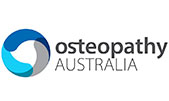
1300 722 206
Contact Us

Pelvic Floor Physiotherapist
Sherin is a clinical and research pelvic floor physiotherapist with many years of experience. She has post-graduate qualifications in Acupuncture; Continence & Pelvic Floor Dysfunction; and Urodynamics. Her extensive knowledge and experience has taken her interstate and overseas sharing her experience and research findings in these areas with other medical and allied health professionals. Sherin has pioneered research into the use of Botulinum Toxin Type A for the treatment of chronic pelvic pain. She is also researching painful intercourse following treatment for breast cancer. Along with Professor Thierry Vancaillie and the WHRIA team she treats women and men suffering from pudendal neuralgia. She was a conjoint lecturer at UNSW from 2008 until she retired from this position in 2020.
To refer patients to Sherin Jarvis please download the interactive WHRIA referral pad, although no referral is necessary for allied health.
Sherin’s early research was in the area of peri-operative pelvic floor physiotherapy improving outcomes of gynaecological surgery. Her passion for finding solutions to pelvic, vulvar and perineal pain conditions and vaginismus has led her to researching the role of pelvic floor muscle overactivity in relation to these. Since 2002 she has driven the ground-breaking research into the use of Botulinum Toxin Type A for these painful conditions.
Sherin and her colleagues from the Royal Hospital for Women and Prince of Wales conducted a large study for simple solutions for intercourse pain in women who have been treated for breast cancer. The results of the OVERcome study have changed the way intercourse pain is managed in women after breast cancer. A study using vaginal dilators in women who have been treated for breast cancer and have developed vaginal or introital stenosis is now underway.
All aspects of the diagnosis, treatment and management of pudendal neuralgia remain a strong research interest for Sherin.
Sousa MS; Peate M; Jarvis S: Hickey M; Friedlander M, 2017, “A clinical guide to the management of genitourinary symptoms in breast cancer survivors on endocrine therapy.” Ther Adv Med Oncl, vol. 9 (4), pp 269-285
Nesbitt-Hawes EM; Won H; Jarvis SK; Lyons SD; Vancaillie TG; Abbott JA, 2013, ‘Improvement in pelvic pain with botulinum toxin type A – Single vs. repeat injections.’,Toxicon, vol. 63, pp. 83 – 87
Juraskova I; Jarvis S; Mok K; Peate M; Meiser B; Cheah BC; Mireskandari S; Friedlander M, 2013, ‘The acceptability, feasibility, and efficacy (phase I/II study) of the OVERcome (Olive Oil, Vaginal Exercise, and MoisturizeR) intervention to improve dyspareunia and alleviate sexual problems in women’, Journal of Sexual Medicine, vol. 10, no. 10, pp. 2549 – 2558
Vancaillie T; Eggermont J; Armstrong G; Jarvis S; Liu J; Beg N, 2012, ‘ Response to Pudendal Nerve Block in Women with Pudendal Neuralgia’, Pain Medicine, vol. 13, no. 4, pp. 596 – 603
Abbott JA; Jarvis SK; Lyons SD; Thomson A; Vancaillie TG, 2006, ‘Botulinum toxin type A for chronic pain and pelvic floor spasm in women: a randomized controlled trial.’ Obstetrics and Gynecology, vol. 108, no. 4, pp. 915 – 923
Jarvis SK; Hallam TK; Lujic S; Abbott JA; Vancaillie TG, 2005, ‘Peri-operative physiotherapy improves outcomes for women undergoing incontinence and or prolapse surgery: results of a randomised controlled trial.’, Australian and New Zealand Journal of Obstetrics and Gynaecology, vol. 45, no. 4, pp. 300 – 303
Thomson AJ; Jarvis SK; Lenart M; Abbott JA; Vancaillie TG, 2005, ‘The use of botulinum toxin type A (BOTOX) as treatment for intractable chronic pelvic pain associated with spasm of the levator ani muscles.’, BJOG: an International Journal of Obstetrics and Gynaecology, vol. 112, no. 2, pp. 247 – 249
Jarvis SK; Abbott JA; Lenart MB; Steensma A; Vancaillie TG, 2004, ‘Pilot study of botulinum toxin type A in the treatment of chronic pelvic pain associated with spasm of the levator ani muscles.’, Australian and New Zealand Journal of Obstetrics and Gynaecology, vol. 44, no. 1, pp. 46 – 50
Dietz HP; Jarvis S; Vancaillie TG, 2002, ‘The assessment of levator muscle strength: A validation of three ultrasound techniques’, International Urogynecology Journal and Pelvic Floor Dysfunction, vol. 13, pp. 156 – 159
McDonald E, Jarvis S, 1999 “Spend a Penny”- Does conservative treatment stand up to the test of time? Australian Continence Journal, vol 5, pp 32-34









© 2025 Women's Health & Research Institute of Australia. Privacy Policy | Terms of Use | Website by Phil Kurth